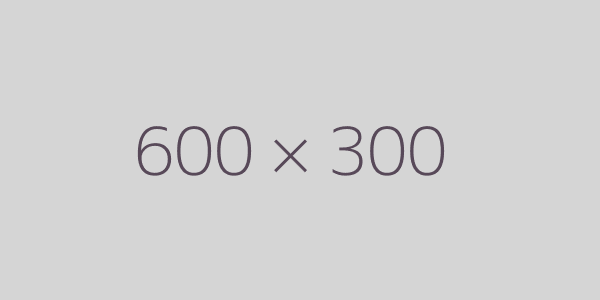The digital product market continues to expand at an unprecedented rate in 2025, with creators and entrepreneurs finding more opportunities than ever to monetize their expertise. Recent market research from Digital Commerce Insights shows that the global digital product economy reached $118 billion in 2024, with projections to surpass $150 billion by 2026.
This remarkable growth stems from shifting consumer preferences toward instant access, minimal environmental impact, and the ability to purchase specialized knowledge and tools without geographical limitations. For creators who want to turn their skills into income streams, the landscape offers numerous platforms with distinct advantages.
Each platform presents unique fee structures, audience demographics, and feature sets that can significantly impact profitability and market reach for digital product sellers. This comprehensive guide examines the top platforms for selling digital products in 2025, analyzes the benefits of marketplaces versus personal websites, and provides practical advice on payment processing and automated delivery systems.
Quick Comparison
| Platform | Best For | Starting Cost | Transaction Fees | Standout Feature | Ideal User |
| Etsy | Printables, templates, patterns, digital art | $0 (pay per listing) | 6.5% + payment processing | Built-in audience & discovery | New sellers without technical expertise |
| Gumroad | Direct sales from existing audience | $0 (no monthly fee) | 10% (reduces with volume) | Simple setup & embedded buy buttons | Creators with social media following |
| WordPress | Complete customization & control | $5-50/month (hosting) + plugin costs | 2.9% + $0.30 (payment processor) | Unlimited flexibility & integrations | Established businesses seeking full control |
| Beacons | Social media monetization | Free plan available | 0-5% depending on plan | Social media integration & mobile optimization | TikTok, Instagram & YouTube creators |
| Shopify | Scalable business with multiple products | $29/month | 0% + payment processing | Enterprise-level tools & analytics | Established brands seeking growth |
| Podia | Courses, memberships & digital downloads | $39/month | 0% + payment processing | All-in-one course & email marketing | Knowledge entrepreneurs & course creators |
Top 6 Marketplaces for Selling Digital Products
Over the past few years, online marketplaces have become go-to destinations for creators looking to sell digital products. These platforms boast large built-in audiences, established trust with customers, and sophisticated marketing strategies that streamline the purchasing process. As a result, sellers can often reach a more extensive customer base than they might on their own websites.
1. Etsy
Etsy has transformed from a handmade goods marketplace to become one of the most prominent platforms for digital products in 2025. Their digital goods category experienced 142% growth over the past three years, with over 7.5 million digital listings currently available. The marketplace attracts approximately 96.3 million active buyers worldwide, providing sellers with an extensive potential customer base.
The platform operates on a straightforward fee structure that includes a $0.20 listing fee per item (listings expire after four months), a 6.5% transaction fee on sales, and a 3% plus $0.25 payment processing fee. Etsy also offers a subscription option called Etsy Plus for $10 monthly, which provides additional marketing credits, customization options, and reduced fees on certain transactions.
Why Choose Etsy
Etsy provides unparalleled organic discovery opportunities for digital product sellers through its sophisticated search algorithm and recommendation engine. Recent platform updates have specifically enhanced visibility for digital goods, with specialized search filters and category features that help buyers find digital products more effectively. Their built-in SEO tools automatically optimize product listings for both internal Etsy search and external search engines like Google.
The platform excels in customer trust factors, which proves essential for digital product sales where buyers cannot physically examine goods before purchase. Etsy maintains strict seller verification processes and buyer protection policies that create confidence in the marketplace. Their review system gives prominent placement to verified purchases, helping quality sellers build credibility quickly. The platform also features integrated social proof elements such as “bestseller” badges that can significantly increase conversion rates.
Who Should Choose Etsy
Digital product creators who focus on printables, templates, patterns, digital art, and other design assets should consider Etsy as their primary platform option. The marketplace has developed a reputation among consumers as the go-to destination for these specific categories, with platform statistics showing that 68% of users who search for printable items start their product hunt on Etsy.
Etsy works particularly well for sellers who lack technical expertise or extensive marketing budgets but still want to reach a substantial audience. The platform handles all technical aspects of hosting, payment processing, and file delivery, allowing creators to focus exclusively on product development and listing optimization. Entrepreneurs who want to test market demand for their digital products before investing in their own website infrastructure find Etsy an ideal starting point.
Here’s a detailed guide of why “Why Etsy is a Great Platform for Digital Product Sellers”
Etsy Pricing
- Listing Fee: $0.20 per item (listings expire after 4 months)
- Transaction Fee: 6.5% of sale price
- Payment Processing Fee: 3% + $0.25 per transaction
- Etsy Plus: $10/month subscription offering:
- Additional marketing credits
- Customization options
- Reduced fees on certain transactions
2. Gumroad
Gumroad has established itself as a creator-focused platform with approximately 98,000 active sellers and over 1.2 million digital products available for purchase. The platform processes more than $450 million in annual transactions, with independent creators earning an average of $2,700 monthly for top-performing accounts.
The platform offers one of the most straightforward pricing structures in the industry, charging 10% on the first $1,000 in monthly sales, which decreases to 2.9% + $0.30 per transaction for established sellers generating over $1,000,000 annually. This tiered approach benefits both new creators and established sellers.
Why Choose Gumroad
Gumroad excels at simplicity and ease of use, allowing creators to start selling digital products within minutes without any technical knowledge. The platform provides a clean, distraction-free checkout experience that has been proven to increase conversion rates compared to more complex marketplaces. Their embeddable buy buttons and direct sales links allow sellers to drive traffic from their existing audience directly to product pages.
The platform offers superior creator control over product presentation and pricing strategies. Sellers can implement flexible pricing models including pay-what-you-want options, subscription access, pre-orders, and tiered pricing packages. Their discount code system supports sophisticated marketing campaigns, with features for limited-use codes, time-sensitive offers, and bundle discounts.
Who Should Choose Gumroad
Content creators with established audiences across social media, YouTube, newsletters, or podcasts benefit most from Gumroad. The platform performs best when sellers drive their own traffic rather than relying on marketplace discovery. Platform data indicates that sellers with email lists exceeding 5,000 subscribers achieve conversion rates 4.5 times higher than those without established audiences.
Digital product sellers who offer premium, high-ticket items or subscription-based content find Gumroad particularly advantageous due to lower fee structures for higher-priced items compared to percentage-based marketplaces. The platform supports both one-time purchases and recurring subscription models, making it ideal for course creators, software developers, and content producers who offer ongoing access.
Gumroad Pricing
- Tiered Fee Structure:
- 10% fee on first $1,000 in monthly sales
- Rates decrease as sales increase
- Down to 2.9% + $0.30 per transaction for sellers generating over $1,000,000 annually
- No Monthly Fee: Pay only when you make sales
- Payment Processing: Included in the fee structure above
3. WordPress
WordPress powers approximately 43% of all websites globally and has become a major player in the digital product marketplace through its extensive ecosystem of e-commerce plugins. WooCommerce, the most popular e-commerce solution for WordPress, now facilitates over $30 billion in annual sales with digital products representing a rapidly growing segment.
The cost structure for WordPress-based selling varies depending on the specific plugins and services utilized. Basic hosting typically ranges from $5 to $50 monthly, while premium e-commerce plugins cost between $80 and $300 annually. Payment processing fees average 2.9% plus $0.30 per transaction when using standard payment gateways like Stripe or PayPal.
Why Choose WordPress
WordPress offers unparalleled customization options and full control over the customer experience. Sellers can design their storefronts to perfectly match their brand identity, implement custom checkout flows, and create sophisticated product display pages that showcase digital goods effectively. The platform supports unlimited product variations, complex bundling options, and flexible content delivery methods.
The extensive plugin ecosystem provides specialized solutions for virtually every type of digital product. Course creators can utilize LMS plugins like LearnDash or LifterLMS, membership site owners can implement MemberPress or Restrict Content Pro, and software developers can use license key management tools like Easy Digital Downloads Software Licensing.
Who Should Choose WordPress
Established digital product businesses seeking to maximize profit margins and build direct customer relationships benefit most from WordPress solutions. The platform becomes increasingly cost-effective as sales volume grows, with businesses selling over $10,000 monthly typically saving 15-30% in fees compared to marketplace alternatives.
WordPress works particularly well for digital product sellers who offer complex products or unique delivery experiences that marketplace platforms cannot adequately support. Course creators who need advanced lesson structures, software companies requiring license key management, membership site operators, and sellers offering downloadable software with frequent updates find WordPress solutions superior to marketplace limitations.
WordPress Pricing
- Hosting: $5 to $50 monthly (depending on provider and traffic needs)
- E-commerce Plugins:
- WooCommerce: Freebase plugin
- Easy Digital Downloads: Freebase plugin
- Premium extensions: $80 to $300 annually
- MemberPress: $179 to $399 per year
- LearnDash: $199 to $369 per year
- Payment Processing: Typically 2.9% + $0.30 per transaction (through Stripe, PayPal, etc.)
4. Beacons
Beacons have emerged as a specialized platform for creators, particularly those active on social media and video platforms. The service currently hosts over 120,000 creator storefronts with approximately 450,000 digital products available. Their transaction volume has grown 235% year-over-year, reaching $175 million in annual sales.
The platform offers a freemium pricing model with premium tiers starting at $10 monthly. Transaction fees range from 5% on the free plan to 0% on higher-tier subscriptions plus standard payment processing fees. All plans include unlimited digital product listings, automated delivery, and basic analytics.
Why Choose Beacons
Beacons excels at social media integration, with purpose-built tools for creators who generate most of their audience from platforms like TikTok, Instagram, and YouTube. Their link-in-bio tool connects seamlessly with digital product offerings, allowing creators to monetize social traffic directly. The platform also offers specialized features for content creators, including tip jars, video sales, and digital download bundles optimized for social promotion.
The platform provides excellent mobile optimization, which proves increasingly important as mobile shopping for digital products continues to rise. Their storefronts load 40% faster than average web stores on mobile devices, and the checkout process has been streamlined specifically for smartphone users.
Who Should Choose Beacons
Social media creators with substantial followings on platforms like TikTok, Instagram, or YouTube benefit most from Beacons. The platform works particularly well for influencers who want to monetize their audience without disrupting their content strategy or sending followers to complicated external marketplaces.
Beacons prove ideal for digital product sellers who offer visually oriented products that can be effectively showcased through social media content. Categories that perform exceptionally well include design templates, presets, filters, digital art, and educational content related to visual creative fields.
Beacons Pricing
- Free Plan: Available with 5% transaction fee
- Premium Plans: Starting at $10/month
- Transaction fees range from 5% (free plan) to 0% (premium plans)
- Standard payment processing fees still apply
- Features by Tier:
- All plans include unlimited digital product listings and automated delivery
- Premium tiers add custom domains, removal of Beacons branding, priority support, advanced marketing tools
5. Shopify
Shopify has strengthened its position in the digital product space, now powering over 1.7 million online stores globally with approximately 23% focused primarily on digital goods. The platform processes more than $200 billion in annual transactions across all categories, with digital products representing a rapidly growing segment estimated at $18 billion annually.
Shopify operates on a subscription model with plans ranging from $29 to $299 monthly for standard features, plus enterprise-level options for larger businesses. Transaction fees vary based on the payment processor used, 0% when using Shopify Payments (except for standard credit card fees of 2.4% to 2.9% plus $0.30 per transaction) or 0.5% to 2% when using external payment gateways.
Check out “How to Set Up a Shopify Store for Digital Products.”
Why Choose Shopify
Shopify offers enterprise-level features accessible to businesses of all sizes, including sophisticated marketing tools, an extensive app ecosystem, and robust security infrastructure. Their platform provides comprehensive omnichannel selling capabilities, allowing digital product sellers to expand beyond website sales to social media storefronts, marketplaces, and even pop-up physical locations when applicable.
The platform provides superior analytics and business intelligence tools compared to most digital marketplace alternatives. Sellers gain access to detailed customer behavior data, conversion funnel analysis, inventory performance metrics, and marketing attribution reporting. These insights allow for data-driven optimization that significantly improves profitability over time.
Who Should Choose Shopify
Established digital product businesses seeking complete brand control and maximum customization options benefit most from Shopify. The platform works particularly well for sellers who want to create distinctive shopping experiences that reflect their unique brand identity and value proposition.
Shopify proves ideal for digital product sellers planning to scale beyond initial offerings into comprehensive product ecosystems. The platform excellently supports businesses that combine multiple digital product types, subscription services, and even complementary physical goods within a unified brand experience.
Shopify Pricing
- Basic Plan: $25/month
- Shopify Plan: $65/month
- Advanced Plan: $399/month
- Enterprise (Shopify Plus): Starting around $2300/month
- Transaction Fees:
- 0% when using Shopify Payments (but standard credit card fees apply: 2.4% to 2.9% + $0.30 per transaction)
- 0.5% to 2% additional fee when using external payment gateways
- Digital Delivery Apps: $5 to $30 monthly depending on features needed
6. Podia
Podia has established itself as a specialist platform for knowledge entrepreneurs and digital course creators. The service currently hosts over 75,000 creator storefronts with approximately 230,000 digital products available, primarily in the education, coaching, and information product categories. Their transaction volume reached $320 million in 2024, representing 178% growth compared to the previous year.
The platform offers a simple, all-inclusive pricing structure with plans ranging from $39 to $199 monthly (with discounts for annual payments). No additional transaction fees apply beyond standard payment processing costs of approximately 2.9% plus $0.30 per transaction. All plans include unlimited products, members, emails, and sales without bandwidth restrictions or additional charges.
Why Choose Podia
Podia excels at integrated functionality for course creators, combining hosting, delivery, marketing, and community features in a single platform. Their system eliminates the need for multiple tools and complex integrations that often plague digital course businesses. The platform supports various content types including video hosting, PDF downloads, quizzes, completion certificates, and drip scheduling.
The platform offers superior email marketing and customer communication tools compared to most digital product marketplaces. Creators can build email lists, segment audiences, create automated sequences, and send broadcast messages directly within the platform. These integrated marketing capabilities enable sophisticated customer journeys and relationship-building beyond initial purchases.
Who Should Choose Podia
Knowledge entrepreneurs who create and sell courses, memberships, coaching programs, and information products benefit most from Podia. The platform works particularly well for creators who want to focus on content creation rather than technical implementation or marketing complexity.
Podia proves ideal for digital product sellers who want to build escalating customer journeys across multiple product types. The platform excellently supports creators who offer free lead magnets that convert to paid digital downloads, then upsell to courses or memberships, and finally promote high-ticket coaching or consulting services.
Podia Pricing
- Mover Plan: $39/month ($33/month billed annually)
- Shaker Plan: $89/month ($75/month billed annually)
- Earthquaker Plan: $199/month ($166/month billed annually)
- Transaction Fees: No additional transaction fees beyond standard payment processing (approximately 2.9% + $0.30 per transaction)
- Features by Tier:
- All plans include unlimited products, members, emails, and sales
- Higher tiers add features like memberships, affiliate marketing tools, course certificates, and priority support
Selling on Your Own Website vs. Marketplaces
Choosing between marketplace platforms and self-hosted solutions is a key decision for digital product sellers in 2025. Marketplaces offer instant access to audiences, a simple setup, and built-in trust, helping new sellers make their first sale in 14 days on average, compared to 47 days for standalone sites.
However, marketplaces come with downsides. Commission fees of 5% to 30% cut into profits, and sellers face limited brand control, design constraints, and competition just a click away. Plus, marketplaces own the customer relationship, restricting communication and data access needed for repeat business.
On the other hand, self-hosted options like WordPress or Shopify give sellers more control, better branding, and higher long-term profits but require more effort upfront in setup and marketing. That’s why Many successful digital product businesses follow a hybrid approach, using marketplaces for initial traction and discovery while building direct sales channels for improved margins and customer relationships over time.
Read our guide about “How to Start a Digital Product Business from Scratch”.
Setting Up Payment Processing for Digital Sales
Reliable payment processing forms the backbone of any successful digital product business. Modern platforms offer various payment gateway options including Stripe, PayPal, Apple Pay, and Google Pay, with most businesses implementing multiple options to maximize conversion rates. Industry data shows that offering three or more payment methods increases checkout completion by 30% compared to single-method checkouts.
Digital product sales involve unique payment processing considerations compared to physical goods. Card decline rates tend to run 20-30% higher for digital purchases due to fraud prevention algorithms, making sophisticated retry logic and customer communication essential for revenue recovery. International sales also present challenges through varying tax requirements, currency conversion issues, and payment method preferences across regions.
Most platforms now include automated tax calculation and collection features, a critical consideration as digital product tax legislation becomes increasingly complex worldwide. The most sophisticated systems automatically handle VAT, GST, sales tax, and digital service taxes across multiple jurisdictions without seller intervention. This tax automation has become particularly important following recent regulatory changes in the EU, UK, and numerous US states targeting digital product sales.
Automating Digital Product Delivery and Customer Service
Effective automation is a competitive advantage for digital product sellers in 2025. Modern platforms provide instant access to purchased content through secure links, member areas, license keys, or app activation codes. These systems run 24/7, ensuring customers receive immediate value anytime.
Customer service automation has also advanced, with AI now handling up to 70% of common inquiries. Chatbots, knowledge bases, and smart FAQs manage basic questions, while escalation workflows ensure complex issues reach human support. Properly implemented automation cuts support costs by 45% while keeping customer satisfaction above 90%.
Post-purchase engagement automation is a key differentiator for successful businesses. These systems deliver instructional content, usage tips, related resources, and strategic upsells based on customer behavior, increasing product usage by 35% and repeat purchases by 28%.
Conclusion
The digital product platform landscape in 2025 offers creators and entrepreneurs new ways to monetize their expertise and work. Successful sellers choose platforms that fit their business model, product type, and goals, instead of relying on generic advice. As businesses grow, many adopt multi-platform strategies to boost visibility and profits.
Beyond choosing the right platforms, thriving digital product businesses focus on creating value, improving customer experience, and using effective marketing strategies. They maximize platform strengths while addressing limitations with additional tools. While technology and platforms evolve, the core principles of delivering value, building customer relationships, and creating sustainable systems remain essential for success.







